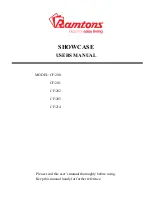
INSTALLATION MANUAL OPERATION MANUAL INSPECTION LOG
KANNAD 406 AF-COMPACT
PAGE: 208
FEB 01/2008
4. Antenna Installation
Use only whip (ANT200) or rod (ANT 300) approved antennas.
A. Antenna Installation Recommendations
(1) FAA Recommendations
Installation must be made by qualified personnel in accordance with FAA
regulations. Duplicating a previous installation may not be acceptable.
Refer to:
FAA - Advisory Circular 43.13-2A (Acceptable Methods, Techniques,
and Practices - Aircraft Alterations), specifically, Chapters 1, 3, 11
and 13.
(2) RTCA DO-204 Requirements
"
The antenna shall be mounted to provide either right-hand circular or
vertical polarization when the aircraft is in the normal flight attitude.
"
"
The antenna shall be installed as close to the unit as possible. The
proximity of the ELT antenna to any vertically-polarized communications
antenna shall be such as to minimize radio frequency interference and
radiation pattern distorsion of either antenna.
"
"
The antenna mounting surface shall be able to whistand a static load
equal to 100 times the antenna’s weight applied at the antenna mounting
base along the longitudinal axis of the aircraft".
B. Antenna mounting location
The antenna must be mounted on the top of the aircraft to assure maximum
visibility of satellites. The upper aft portion of the fuselage should be preferred.
It should be mounted away from projections such as a propeller, tail surfaces,
or the shadow of large antennas.
Locate a position on the fuselage where:
• the antenna can be installed vertically with at least antenna length [(0.61
meter, 24 inches for ANT200); (0.39 meter, 15.47 inches for ANT300)]
clearance from other antennas (specially VHF) mounted on the aircraft,
• when installed, the coaxial cable of the antenna will not cross any major
structural sections in the aircraft so that, in the event of a crash, the ELT
and the antenna are in the same section (placing the antenna directly
above the ELT unit being the best solution).
If the ELT transmitter and outside antenna are on opposite sides of an airframe
production break, the components should be secured to each other by a tether
that can support a 100 G load (ELT weight x 100). The interconnecting
antenna-to-ELT cable should have sufficient slack on both ends that it will not



































